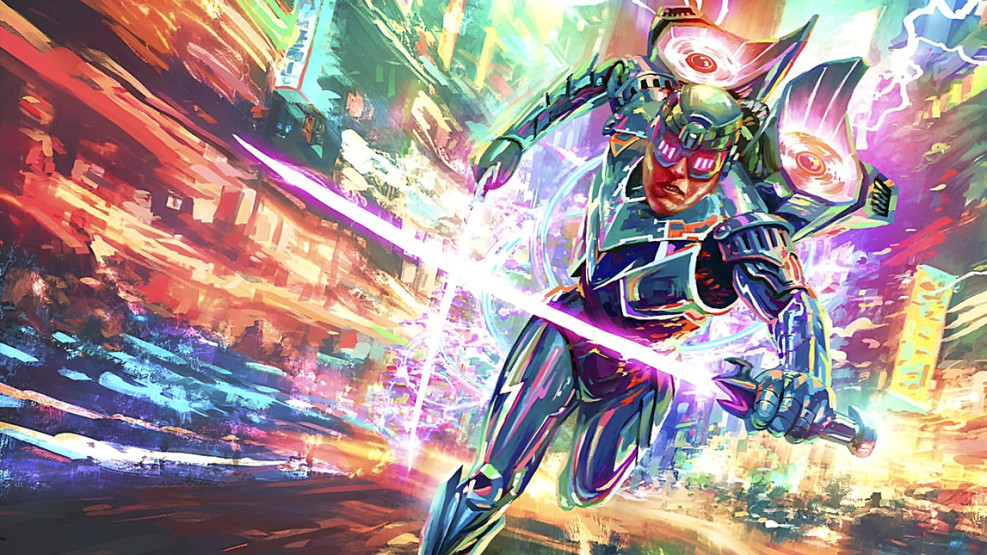We need to talk about boost.
When Mara Faris' highly-efficient deckbuilding skills cranked out a Boom Grenade-focused Dash I/O for last year's US Nationals, I expected a wave of imitators to board what was surely a leading aggro option. When the Armory Deck made Dash I/O into one of the leading on-ramps for CC play, I thought surely new players would have numerous competitive champions to model their lists on. And yet, here we are 16 months after Bright Lights' debut, and Dash I/O still has only 155 Living Legend points. Which is double what Maxx Nitro has, and six times Teklovossen.
What gives?
16 months after Bright Lights' debut, Dash I/O still has only 155 Living Legend points.
Many will quickly point to Bright Lights as a failure. With its narrow focus on one class and conservative design under the potential of High Octane (a card LSS went on to ban), it's easy for a wide segment of the fandom to dismiss it.
But even when heroes aren't widely picked up, there are usually specialists who champion the deck and carve out a name for themselves on it. That just doesn't seem to be the case for any of the Mechanologists. Even as the original Dash, Inventor Extraordinaire sits on the precipice of Living Legend, where are the players scrambling to claim their title carrying her across the finish line?
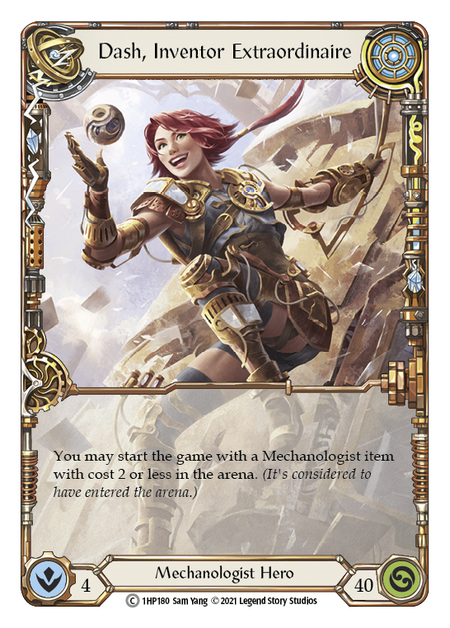
In short, Mechanologist has lost its niche. For every reason a player might choose to play Mech, there's a compelling reason to play something else instead.
Take, for example, board state. Building an engine is a signature of Mechanology, and the various effects of their item cards can add up to much more than the sum of their parts. But most items operate on a clock, and for all the work you've done to build it, there's little you can do to preserve that engine. Items cost action points to put into play, and while newer items offer that action back via crank (paid for by getting less time with that item in play), any older items you may want to play enjoy no such flexibility.
You know who else builds a board state of varying effects? Prism. Modern versions of Viserai. Oscilio, in his own way. Even Enigma is crowding in on this space.
Design overlap is nothing new, mind you. Many heroes are defined not by one specific mechanic they've cornered the market on, but by the overlaps of mechanics that they utilize. But what's felt almost too apparent in the months since High Octane was banned is that Mechanologist, as a class, doesn't actually do its mechanics well. And nowhere is that more apparent than in its most prevalent mechanic, presented in its most fundamental card: Zero to Sixty.
Mechanologist, as a class, doesn't actually do its mechanics well.
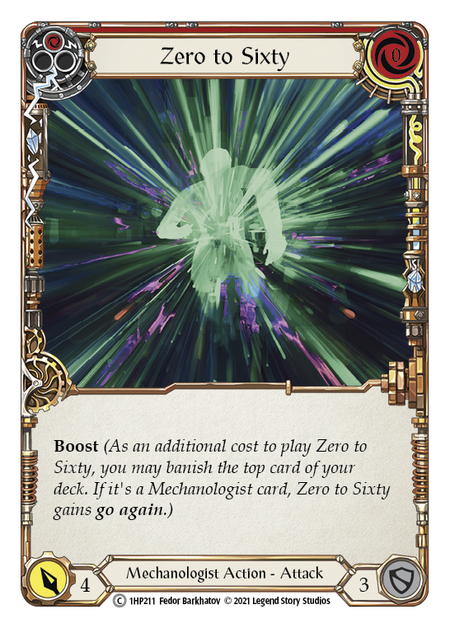
The promise of the boost mechanic is in breaking the standard value propositions of the game: that you can get 4 damage with go again from a single card. 0-for-4 go again is typically burdened with a condition that must be met, such as:
- If you've played another red card (Blaze Headlong)
- If this is Draconic (Art of the Dragon: Blood)
- If this card was fused (Entwine Lightning)
- If you've played an instant this chain link (Flittering Charge)
- Until the end of turn, you may only play cards that are Draconic (Oath of Loyalty)
- [If the top card of your deck is red] (Ravenous Rabble)
- If this hits (Soulbead Strike)
- If you control a Spectral Shield (Spectral Prowler)
(You can see the full list of 0-for-4 go agains on FABrary here.)
Of course, Zero to Sixty has a condition too: it must banish a Mechanologist card off the top of your deck. To ensure that value, one must either play Dash I/O or, usually, build the entire deck solely using class cards - meaning most Mechanologist decks are built from the most restricted card pool of any decks in FAB.
But it bears mentioning that the list above is still full of fantastic cards that get played in most of the decks that can use them! And those decks are also built with the fulfillment of those conditions in mind. Draconic and Lightning decks, in particular, use several of these 0-for-4s, and their decks make meeting the required conditions effortless. Sure, not every hand has a starter for Blaze Headlong or an instant worth playing for Flittering Charge, and not every topdeck will reveal a red for Ravenous Rabble - but generally, these cards fit effortlessly with what the decks are trying to do.
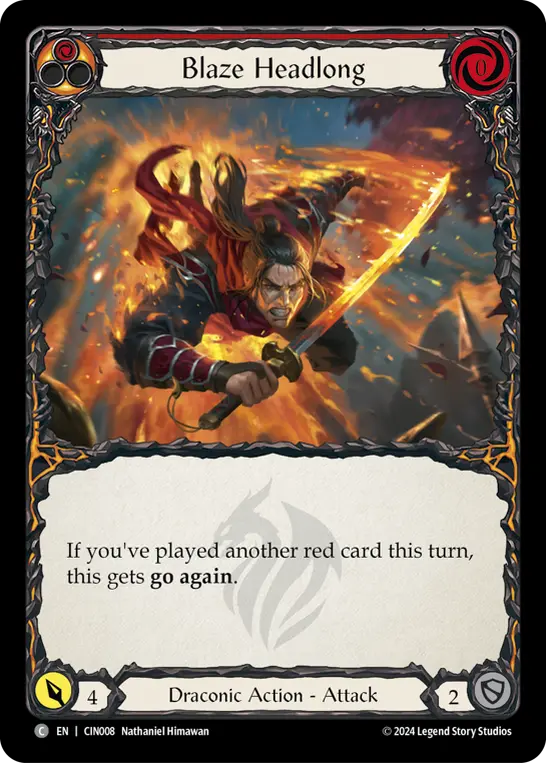
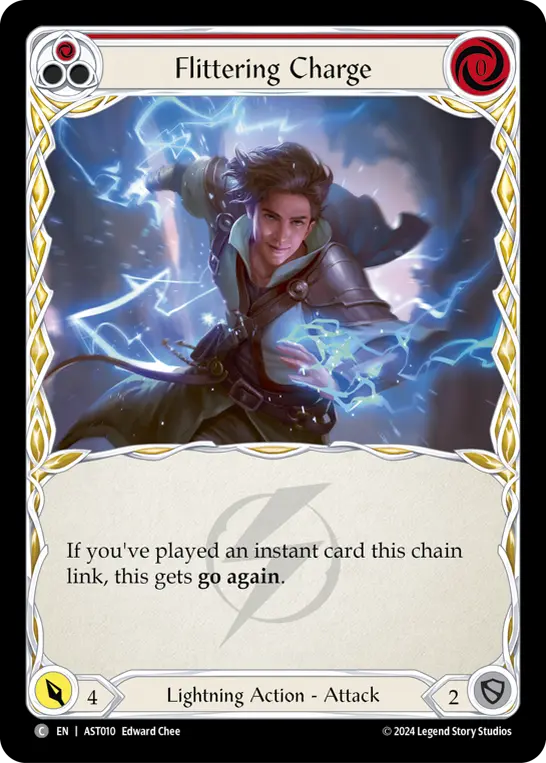
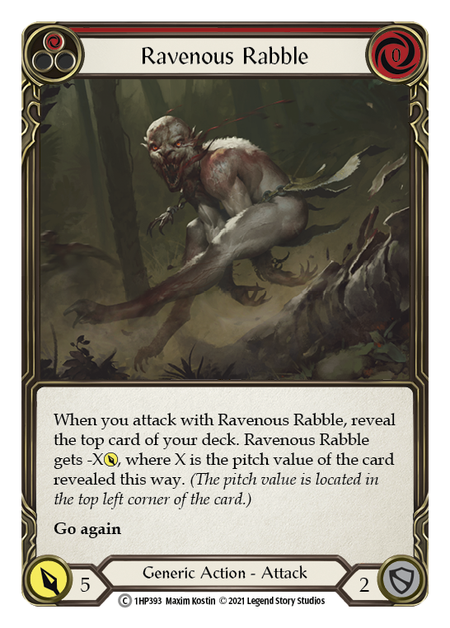
Boost is truly a give-and-take, with an emphasis on the taking: every time you boost a Zero to Sixty, it's a 1-card-4 now that costs you 1 more card later. It's a later you hope you never see, but any Mechanologist player can tell you the deck is constantly running against that needle drop to E.
Players will talk about the big 3 boost cards in the class, and demonstrate Mech's strength in the immediate returns: with Throttle, Zipper Hit, and Zero to Sixty, you can pitch a blue to deal 15, and maybe even follow up with a weapon shot. But ignoring the weapon for now (because the weapon needs a resource from a prior turn), that's a 4-card 15 that, as the game continues, actually took 5 cards out of your deck. If your game saw every card, you got 3 value out of each of those, even if at the time of play your 4-card hand averaged just shy of 4.
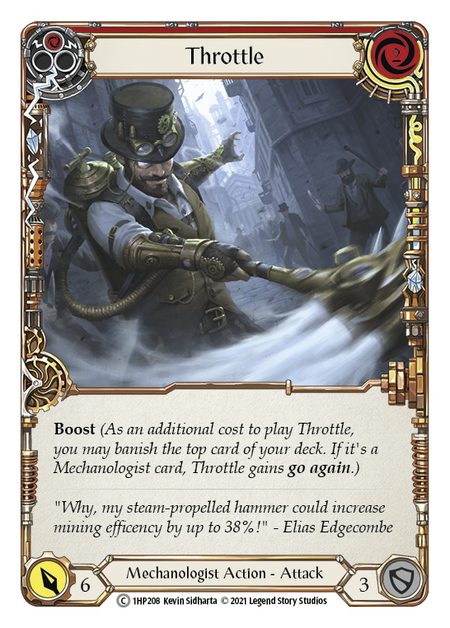
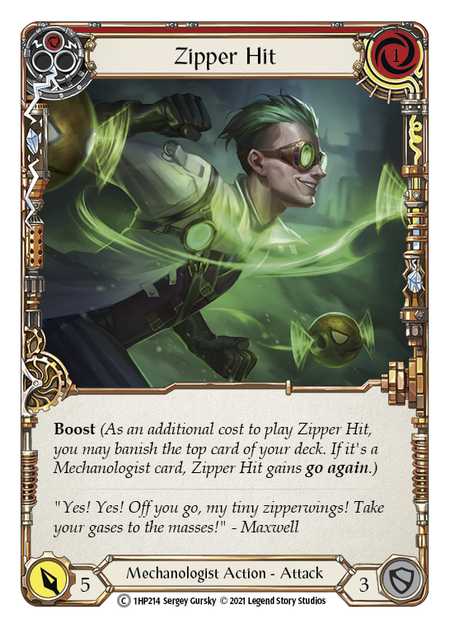

And this is an ideal hand, one that maximizes the use of a blue pitch and has the highest-rate staples in it. Most Mechanologist boost cards don't go 2-for-6 or 0-for-4.
What kind of value do other aggro decks get from their 4-card hands?
Can Dash, Maxx, or Dash I/O race them?
Can they outlast them?
Before I continue, I want to be clear on one thing: I am being somewhat reductionist here for the sake of a clear analysis. Cards like Boom Grenade and Maximum Velocity represent opportunities to spike the damage output of a turn. And Mechanologists have items and equipment that generate additional resources, letting them spend more during their wide turns. I am not claiming that boost decks are flawed or failed.
I am not claiming that boost decks are flawed or failed. But Gotta Go Fast may not be the only way to play Mechanologist.
But Gotta Go Fast may not be the only way to play Mechanologist. In fact, I'm starting to wonder if it's even the best way anymore.
Let's reverse to the initial value proposition of boost - but this time, let's expand our focus to the rest of the card, because there's a second value that's also getting pushed up. Zero to Sixty is a 0-cost 4 with go again... and it blocks for 3. An unwritten rule of FAB's card design is that unqualified go again means a card blocks for 2; and when a card's prerequisites for gaining go again are easy enough, that card quickly becomes a staple. Examples include Breakneck Battery, Cinderskin Devotion, Dread Screamer, Dunebreaker Cenipai, Enlightened Strike, Rune Flash, Spears of Surreality, and Torrent of Tempo; you can see the full list on FABrary here.
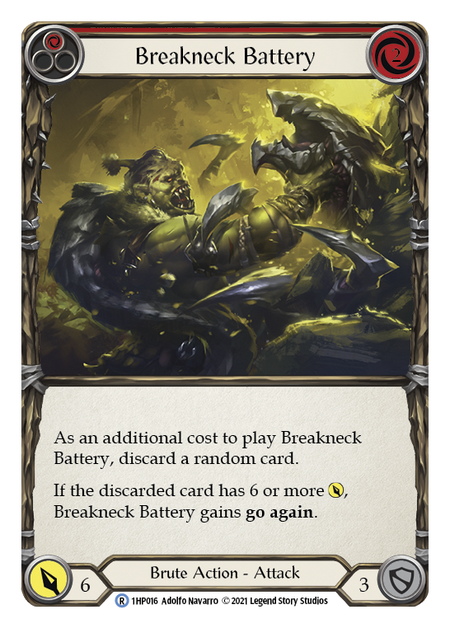
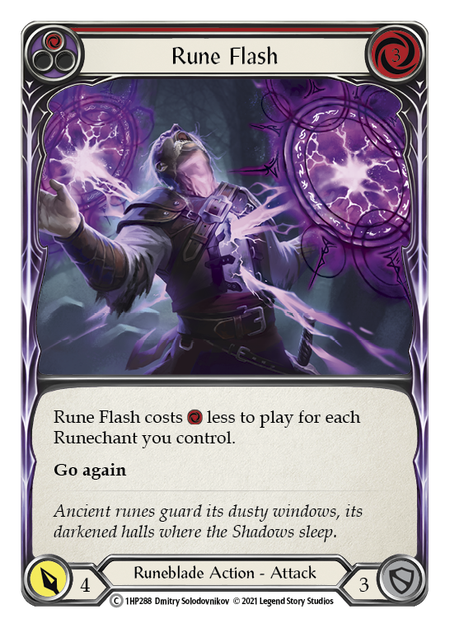
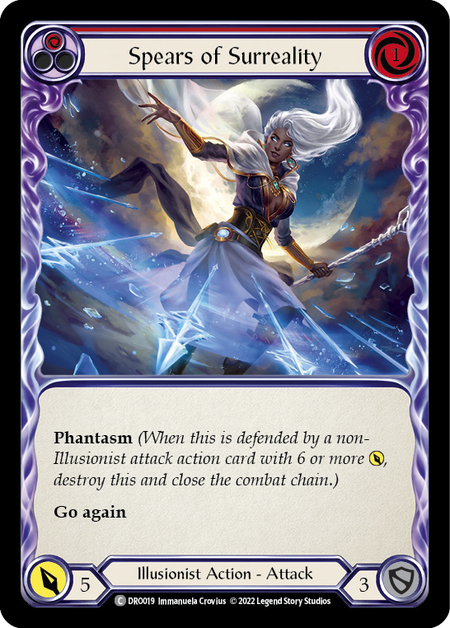
And basically every boost card has this feature. (The sole exception is Steel Street Hoons, which crosses over two Mechanologist mechanics by including the galvanize keyword and thus gives the card the potential to block for 4.)
Of course, when you play an attack, the defense value doesn't matter. But while that card sits in your hand, it critically serves two meaningful roles: it can block for 3 if needed, but if it's not needed you can convert it into more power on your turn. It's the same logic behind non-attack action buffs - which also tend to have 2 defense. These extenders are incredibly valuable to decks that look to take an agile posture, ensuring that no card in hand is ever wasted.
When compared to other aggro decks, Mechanologists will always be held back by the value that's being allocated to that defensive stat. And while deckbuilders have worked extensively to overcome that deficit to remarkable success, it's hard to ignore how much the deck is racing the clock to cash in on all the pressure it can possibly muster before the strain on its own engine becomes too much.
When compared to other aggro decks, Mechanologists will always be held back by the value that's being allocated to that defensive stat.
Yet when your strategy values both the attack and defensive stats of every card - as is often the case for decks like Rhinar, Victor, all versions of Arakni, and Ira - the equal distribution of value across both numbers becomes a real asset. That list of heroes may not be tearing up the meta, but they do represent a different corner of FAB, and thus carve out a place for themselves as balanced decks that aren't as susceptible to meta swings. This is actually been a part of Dash, Inventor Extraordinaire builds of the past, and it's how Teklovossen is built today: valuing equally the ability to block well and fully take advantage of offensive windows.
Zandrenel is known in the Flesh and Blood TCG Discord for his dedication to Teklovossen, and his appropriately-named Block'n Boost decklists are already coming at Mechanology from this angle. With a 20-card boost package, Teklovossen has onboarded some extenders that can help his damage output - but perhaps more critically, they help to dig through his deck for the engine pieces he requires. Each piece not only works towards his incredible Mechnopotent payoff - where he inverts the typical Mech math by asking for 1-3 cards per turn while spending none - but also creates a very real boardstate in and of itself.
While not every deck above has a combo to it, they do all share spike turns: those pivotal spots where things come together and you push massive damage, thereby justifying your measured, steady pace. Mechanologists used to have this in High Octane and the construction of their Pistol; but since the banning of the former, it's become much more difficult to gain copious amounts of action points to combo out with.
Can Dash I/O take a page from Teklovossen's notebook? I'd argue yes - and there are a few options. The shared core is spike turns where we can suddenly output tempo-shifting damage without going 'shields down' ourselves.
The easiest way is mostly a strategic pivot. Maximum Velocity is an incredibly powerful close to a wide turn; but rather than build every turn to reach Maximum Velocity, we can plan for it as an opportunistic pivot later in the game, when our deck is loaded with the blues to pay for it. A shift toward a strategy of pitching lets us go more resource-heavy on our attacks, which in turn lets us output more damage.
But while Max V stands out, there are easier payoffs worth considering. Big Shot, for example, is still an 8 while remaining a playable 6 when it's not online.
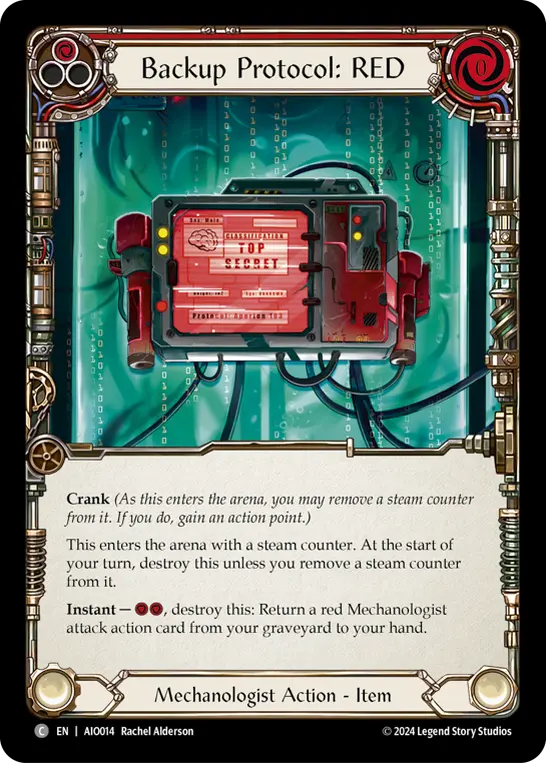

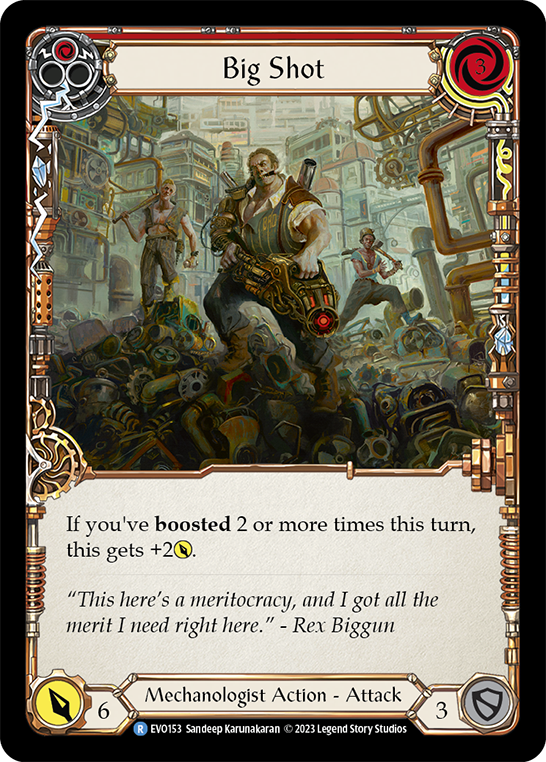
Enabling this is Backup Protocol: RED, which lets you effectively store Max V in your graveyard until you're ready to go 4-wide. If that's not in the cards, it can just as easily grab a Zipper Hit for 5 (playable off the blue you pitched to activate it); or with 2 blue pitch cards, you can probably throw two 6s. The flexibility is a major selling point here.
Also an option - at the risk of exposing my own meme-tastic bias - is the Nitro Mechanoid. While the loss of High Octane was a major blow, the tempo shift it represents is significant; it can take several turns for an opponent to climb out from beneath the advantage of a free 6 with overpower and a temper block that starts at 5. (Be sure to incorporate Hyper Drivers in an organic way, so that they aren't simply liabilities to your deck.)
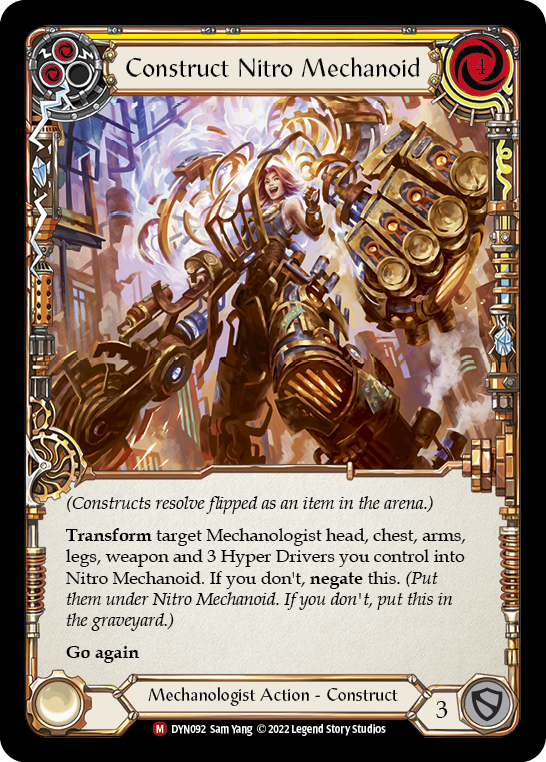
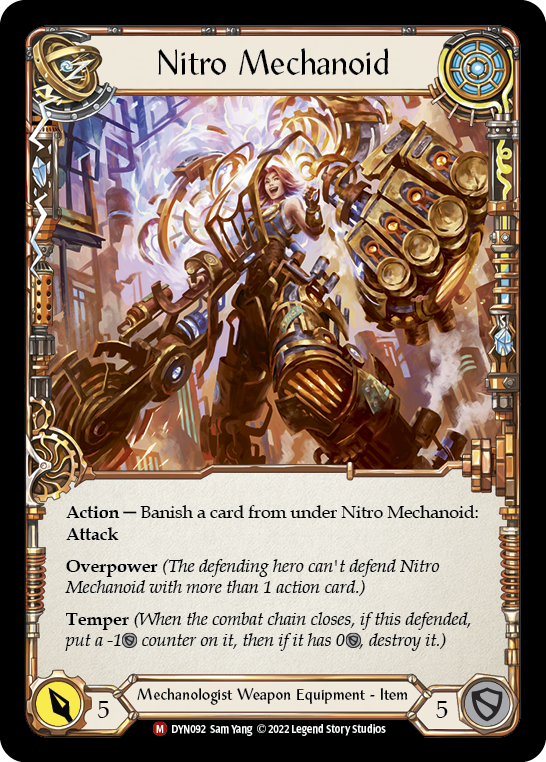
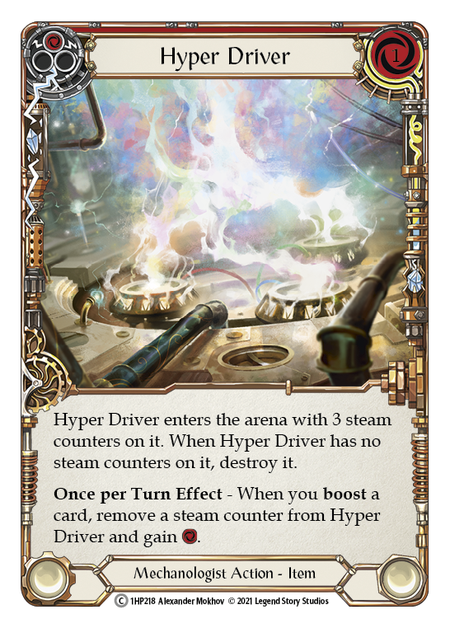
Dash I/O can contribute to key-card strategies by her topdeck access; similarly, boost can be used to dig through the deck for those key cards faster. Depending on the goals of your deck, she may even free you of the need to stick solely to Mechanologist class cards; if you're boosting opportunistically rather than constantly, you can afford misses in your list. And her ability to play items off the top at instant speed can both accelerate your boardstate and remove vulnerabilities before they end up in your hand.
Items can act as their own payoff - the Scripts, for example, act as multiple ways to gain cumulative advantages (though they ask you to pivot to particular play patterns to accommodate them). Cranking an item with Dash I/O can unexpectedly extend your turn, so every crank item carries with it the potential to catch an opponent off guard before we even get to the actual effect.
Taken in this light, boost can be viewed as a flexibility tool that helps us cycle to find key cards, extend turns when we haven't been presented with compelling reasons to block, and maintain the mathematical value of our cards when we don't want to use them to their greatest offensive potential. A carefully built Mechanologist deck has the potential to pivot into several roles to answer the opponent before us. Why stop at racing? We can be so much more.

